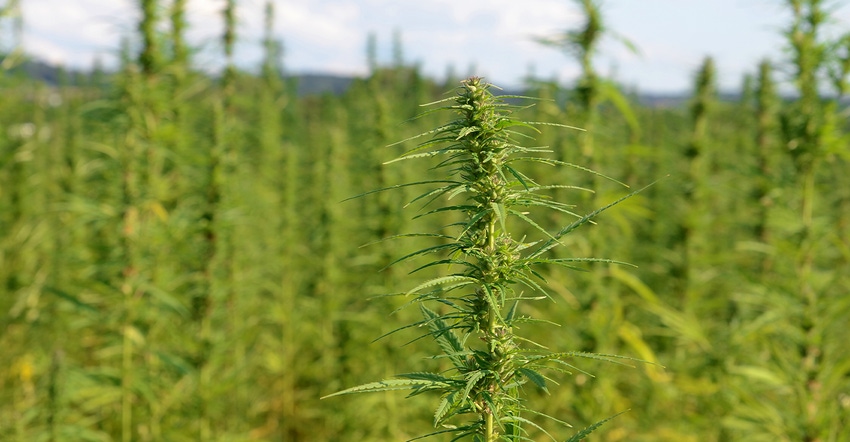September 10, 2019

Hemp is getting a lot of attention these days as the potential comeback crop of the century. Once raised widely in the United States, the crop was made illegal in the late 1940s. That all changed with the 2014 Farm Bill, where limited test planting was made possible, and the 2018 Farm Bill opened the doors to the crop as a potential income alternative to lower-earning commodities.
There are still some kinks to get worked out regarding the U,S. Food and Drug Administration and USDA, so for many hemp is a crop to watch. And if you want to get a good, informational background on the crop, the University of Wyoming Extension team has the answer — with “Hemp in Wyoming,” a new publication.
The crop, Cannabis sativa, can be used for its oil, food or fiber, and the list of potential uses continues to grow. The bulletin from UW Extension is designed for folks curious about the crop and its cultivation. In addition, the publication explores how the crop might fit into typical crop rotations in the state.
Caitlin Youngquist, UW Extension educator, cautions that the crop is not yet legal to be grown in Wyoming. “For the most current information about growing hemp in the state, I encourage people to visit the Wyoming Department of Agriculture website [wyagric.state.wy.us].”
The bulletin offers an in-depth look at the crop and its specific constituents for different products. The writers point out that there are four kinds of hemp cultivars: oilseed, cannabidiol (CBD), fiber, and dual-purpose for oilseed and fiber.
Oilseed and fiber cultivars are grown as field crops. The high-value CBD cultivars are produced as horticultural crops. And there are differences in seed size, height and yield for the different hemp varieties.
The bulletin digs into hemp agronomy, discussing planting rates for the different cultivars, seeding rates and emergence details. And the publication looks at the biology of the plant, too.
John Connett, UW College of Agriculture and Natural Resources master technician, commented he has had may years of experience as a field and greenhouse manager and is available to discuss the crop with interested farmers. Contact Connett at 307-766-5022, or email him at [email protected].
You can also go online to read, and download, the publication.
Source: University of Wyoming Extension. The source is solely responsible for the information provided and is wholly owned by the source. Informa Business Media and all its subsidiaries are not responsible for any of the content contained in this information asset.
You May Also Like




